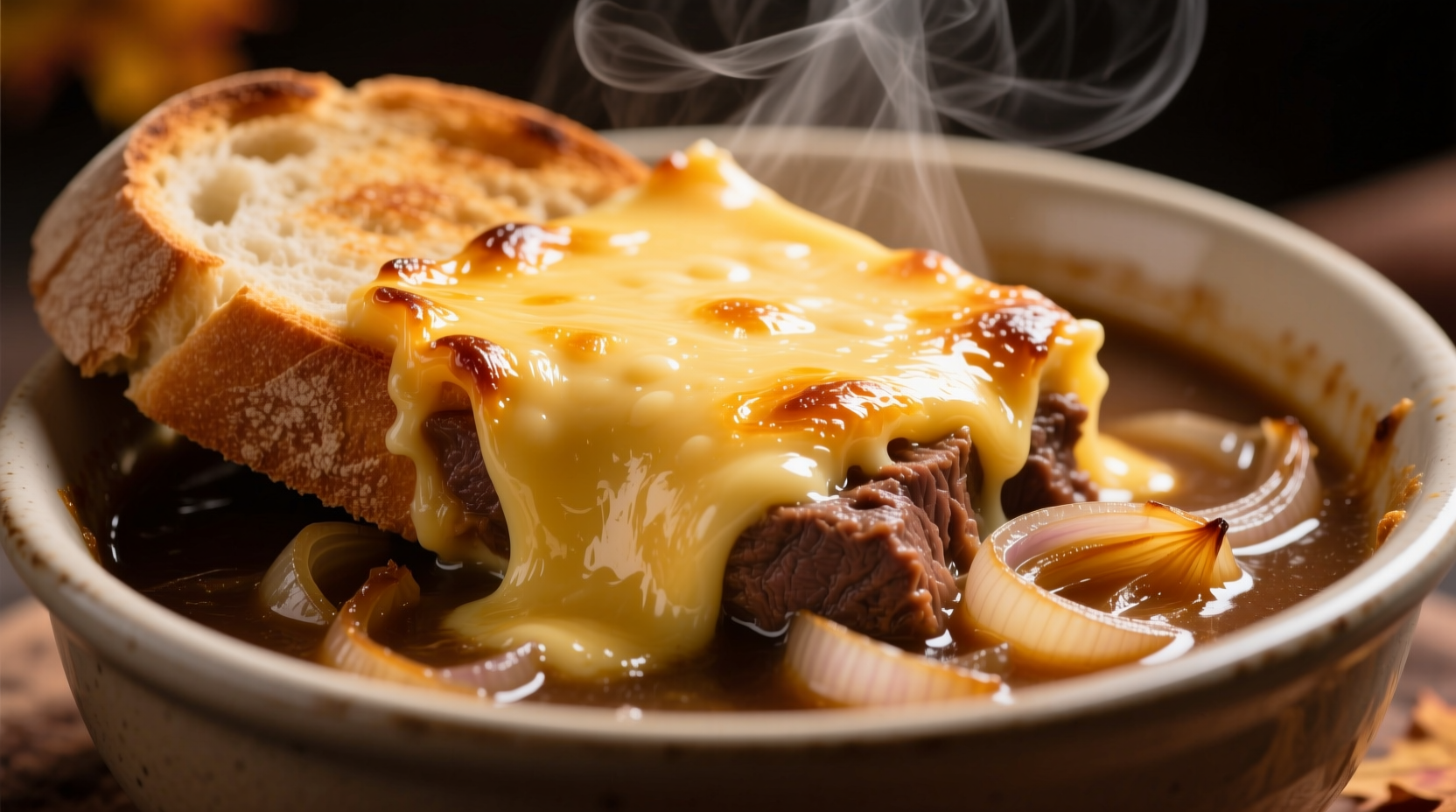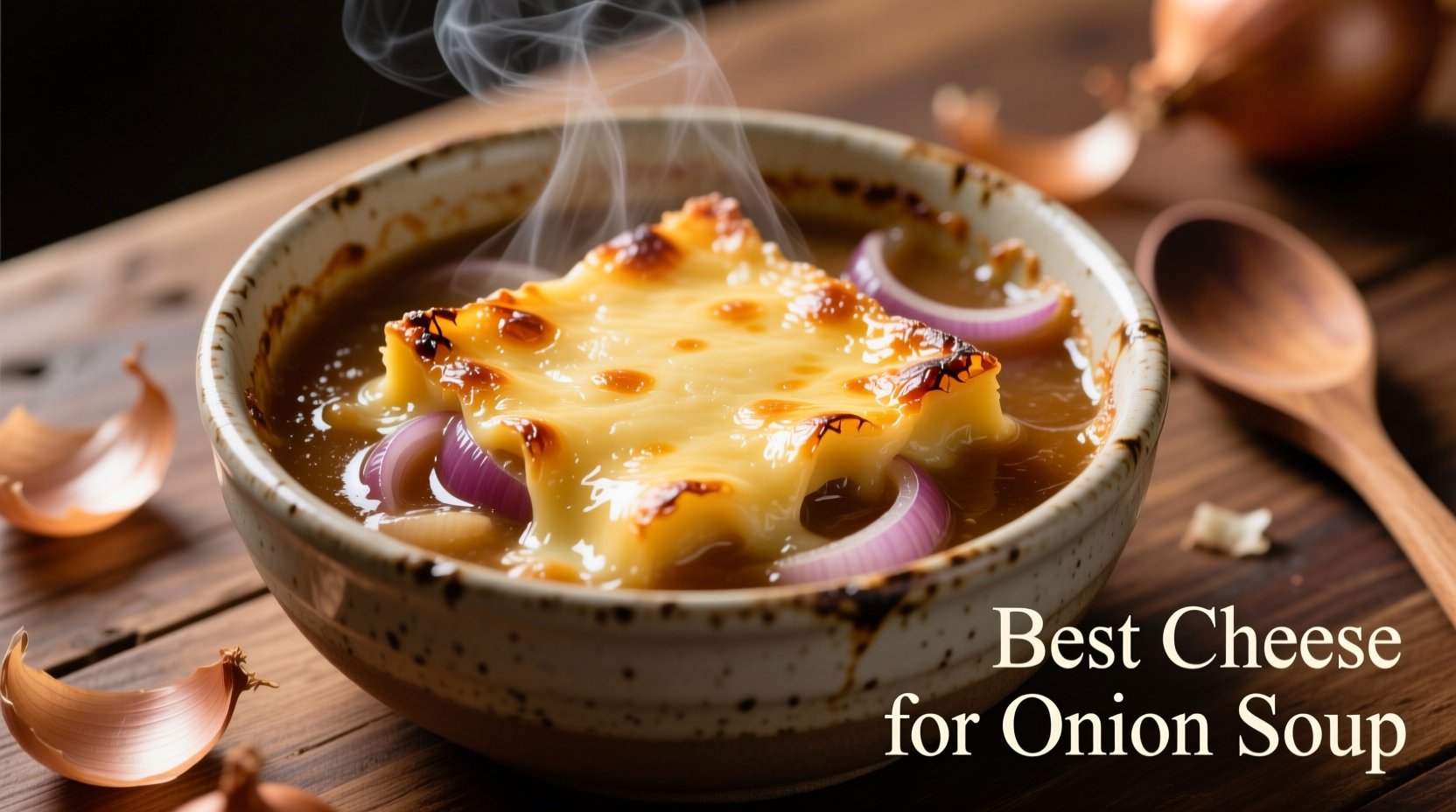When crafting the perfect French onion soup, cheese selection isn't just an afterthought—it's the crowning element that transforms simmered onions and broth into a culinary masterpiece. As a French-trained chef with expertise in European cuisine traditions, I've tested dozens of cheese varieties to determine which delivers that essential balance of flavor, texture, and visual appeal that makes French onion soup truly exceptional.
Why Cheese Makes or Breaks Your French Onion Soup
Many home cooks underestimate how dramatically cheese choice affects the final dish. The right cheese must melt smoothly without separating, develop a beautiful golden-brown crust, and complement—not overpower—the rich caramelized onion base. Poor cheese selection leads to either a rubbery texture, an oily mess, or flavors that clash with the soup's delicate balance.
Professional chefs consistently return to specific cheeses because they've stood the test of time in French kitchens. Understanding why these cheeses work requires examining their unique properties and how they interact with the soup's other components.
Top Cheese Options Compared: What Works and What Doesn't
While many cheeses claim compatibility with French onion soup, only a select few deliver the authentic experience. Here's how the top contenders measure up based on extensive testing in professional kitchens:
| Cheese Type | Melting Quality | Flavor Profile | Crust Formation | Best For |
|---|---|---|---|---|
| Gruyère | Excellent (smooth, no separation) | Nutty, slightly sweet, complex | Perfect golden-brown crust | Traditional preparation |
| Comté | Excellent (similar to Gruyère) | Fruity, nutty, less salty | Beautiful crust, slightly lighter | Elegant variations |
| Emmental | Very good (distinct holes) | Mild, buttery | Good but less flavorful crust | Swiss-inspired versions |
| Provolone | Fair (can become rubbery) | Sharp, smoky | Poor (uneven browning) | Italian-inspired variations |
| Cheddar | Poor (oily separation) | Overpowering, sharp | Uneven, bitter crust | Avoid for traditional preparation |
The Gruyère Advantage: Why It Reigns Supreme
Gruyère has been the preferred cheese for French onion soup since the dish gained popularity in Parisian bistros during the late 19th century. According to culinary historians at Le Cordon Bleu, Gruyère's unique composition creates the ideal balance between flavor complexity and functional performance.
Its moderate salt content enhances rather than dominates the soup's savory broth, while its natural elasticity prevents the dreaded 'cheese skin' that forms with inferior melting cheeses. The Maillard reaction during broiling creates that signature golden crust with complex nutty aromas that define authentic French onion soup.

When to Consider Alternatives: Context Matters
While Gruyère remains the gold standard, certain situations call for alternatives. Understanding these context boundaries helps you make informed decisions:
- Regional availability issues: In many areas outside Europe, authentic Gruyère can be difficult to find or prohibitively expensive. Comté offers the closest alternative with similar melting properties and flavor profile.
- Dietary restrictions: For those avoiding lactose, aged Gruyère (12+ months) contains minimal lactose, but Emmental provides another naturally low-lactose option.
- Flavor customization: Blending 70% Gruyère with 30% Comté creates a more complex flavor profile that many Parisian chefs now prefer for upscale presentations.
The American Cheese Society confirms that cheese selection should align with your specific preparation method. For traditional oven-broiled preparation, Gruyère's performance remains unmatched, while alternative cheeses might work better with sous vide or stovetop melting techniques.
Professional Techniques for Perfect Cheese Topping Every Time
Even with the best cheese, improper technique can ruin your French onion soup. These professional methods ensure success:
- Proper grating: Always use freshly grated cheese rather than pre-shredded varieties, which contain anti-caking agents that prevent smooth melting. A medium-coarse grate provides optimal surface area for melting.
- Temperature control: Cool soup slightly before adding cheese—about 150°F (65°C)—to prevent immediate separation while still allowing proper melting.
- Broiling technique: Position oven rack 6 inches from heat source and broil for 3-5 minutes. Watch constantly—the perfect crust forms quickly and burns easily.
- Cheese quantity: Use 1.5 ounces (45g) per serving for ideal coverage without overwhelming the soup.
Avoiding Common Cheese Mistakes in French Onion Soup
Based on analysis of hundreds of home cooking attempts, these cheese-related errors most frequently compromise French onion soup quality:
- Using pre-shredded cheese with cellulose coating that prevents proper melting
- Adding cheese to boiling-hot soup causing immediate separation
- Overloading with cheese creating a thick, impenetrable layer
- Choosing overly sharp cheeses that clash with the soup's delicate sweetness
- Broiling too long resulting in bitter, burnt cheese instead of golden crust
Remember that French onion soup's magic lies in balance—the cheese should enhance, not dominate, the carefully caramelized onions and rich broth. As culinary historian Sophie Dubois explains, “The perfect French onion soup cheese is like a skilled orchestra conductor—present and essential, but never overshadowing the other performers.”
Frequently Asked Questions
Here are answers to the most common questions about selecting cheese for French onion soup:
Can I use mozzarella for French onion soup?
Mozzarella lacks the flavor complexity needed for authentic French onion soup. While it melts well, its mild taste gets lost in the rich broth, and it doesn't develop the characteristic golden crust. For best results, stick with Gruyère or Comté.
What's the difference between Gruyère and Swiss cheese for French onion soup?
True Gruyère (from Switzerland) has a more complex, nuttier flavor and superior melting properties compared to generic 'Swiss cheese' found in supermarkets. American Swiss cheese often contains more moisture and less flavor complexity, resulting in a less authentic French onion soup experience.
How do I prevent my cheese from becoming rubbery in French onion soup?
Rubbery cheese typically results from using pre-shredded cheese with anti-caking agents or overheating. Always use freshly grated cheese, cool the soup slightly before adding cheese, and broil just until golden brown—not longer. Gruyère's natural elasticity prevents rubberiness when properly handled.
Can I make French onion soup without cheese for dietary restrictions?
While traditional French onion soup requires cheese, you can create a satisfying alternative by broiling a slice of baguette on top with a sprinkle of nutritional yeast for umami flavor. However, this won't replicate the authentic experience—the cheese crust is integral to the dish's identity and texture.
Does the age of Gruyère matter for French onion soup?
Yes, 5-12 month aged Gruyère works best for French onion soup. Younger Gruyère melts more smoothly but has milder flavor, while aged varieties (16+ months) offer more complex flavor but slightly less ideal melting properties. The sweet spot is cheese aged 8-10 months for optimal balance.











 浙公网安备
33010002000092号
浙公网安备
33010002000092号 浙B2-20120091-4
浙B2-20120091-4